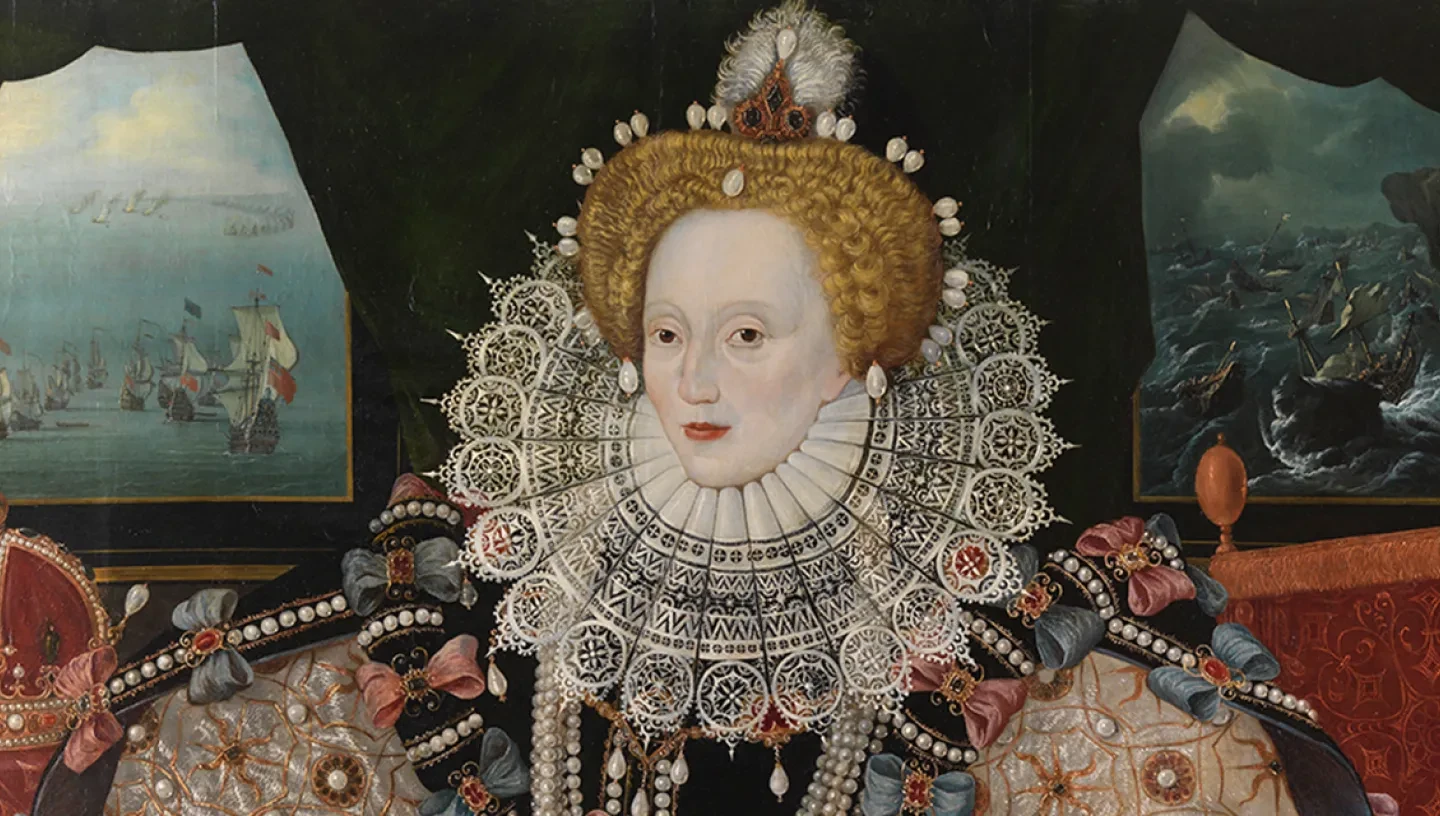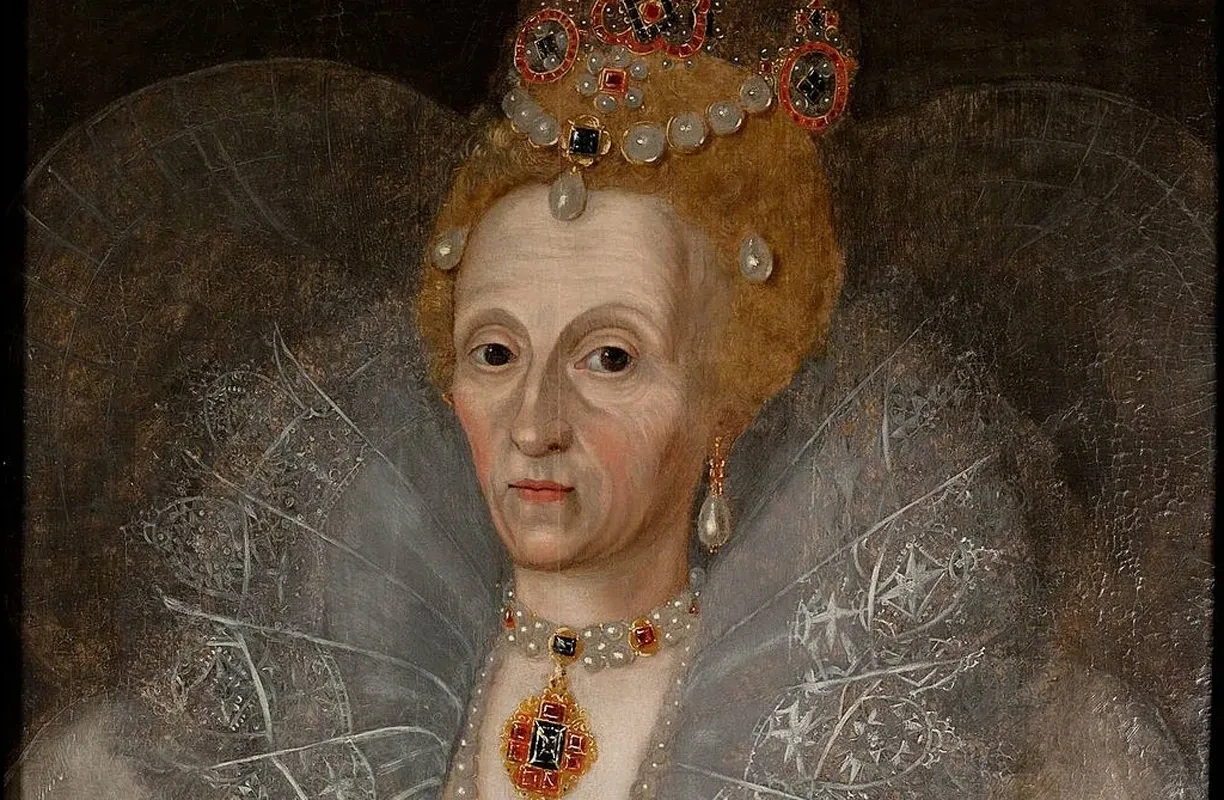
When did Elizabeth I die?
Elizabeth I died on 24 March 1603 at the age of 69 after a reign of 45 years. Many now believe she died by blood poisoning, but a post-mortem at the time wasn't permitted. Read about some of the theories surrounding the Queen's death.

See the Armada Portrait at the Queen's House
How did Elizabeth I die?
The cause of Elizabeth’s death remains a hotly contested subject. Before her death, Elizabeth refused permission for a post-mortem to be conducted, leaving the cause of her death forever shrouded in mystery. There are however, a few theories:
1. Some say that she may have died of blood poisoning, brought on by her use of a lead-based makeup known as “Venetian Ceruse” (or “the spirits of Saturn”). This substance was classified as a poison 31 years after Elizabeth’s death.
2. Other proposed causes of death include pneumonia, streptococcus (infected tonsils), or cancer.
3. Close to the time of her death, Elizabeth’s coronation ring had grown into her flesh. This was due to the fact that she never had it removed during the 45 years of her reign. Her doctors insisted that the ring had to be removed, and within a week Elizabeth died.
Visit the Queen's House in Greenwich
Where did Elizabeth I die?
Elizabeth I died in Richmond Palace. At the time of her death she was reported to have a full inch of makeup on her face.
By this point, she had lost most of her teeth, suffered hair loss, refused to be attended to and bathed. GJ Meyer describes her as “a pathetic spectacle, all the more so because throughout her reign she has been vain to the point of childishness.” (The Tudors: The Complete Story of England’s Most Notorious Dynasty)
Her rumoured last words were: “All my possessions for one moment of time.”
Historians believe this statement is apocryphal.
The Queen’s Lady of the Bedchamber refused to allow Elizabeth’s body to be subject to a post-mortem. Some argue that this was a way to safeguard the Queen’s reputation as a virgin.
Queen Elizabeth I: facts and myths
Was Elizabeth I depressed?
- Towards the end of her life, Elizabeth began to suffer from bouts of melancholy following the deaths of several of her close companions, including her long-serving lady-in-waiting Katherine Howard and former favourite, Robert Devereux, Earl of Essex.
- During her final days, Elizabeth expressed regret about ordering the execution of her cousin, Mary Queen of Scots. Sir Robert Carey recorded that Elizabeth “shed many teares and sighs, manifesting her innocence that she never gave consent to the death of that queene.”
- Elizabeth Southwell, a lady-in-waiting, reported that the Queen was haunted by visions of her frail body, and that a playing card with a nail through its head was found on the Queen’s chair toward the end of her life. Elizabeth Southwell also reported that the Queen’s corpse was so full of noxious vapours that it exploded in her lead coffin. Southwell proved to be an unreliable source after she converted to Catholicism following the Queen’s death.
- Elizabeth’s emotional and physical ailments escalated to the point that she took to standing in her bedchamber up for 15 hours without assistance before collapsing onto the floor which her ladies-in-waiting had covered with cushions. It is said that Elizabeth resisted lying down out of fear that she would never rise again. Elizabeth lay speechless on the floor for four days before her servants finally managed to settle her into bed.
- Elizabeth communicated her instructions for who would succeed her on the English throne with a hand gesture. By the time succession arrangements were being made, Elizabeth’s illness had robbed her of her powers of speech. “When asked if it was her wish for James VI of Scotland to inherit the crown, Elizabeth apparently, gestured with her hands, drawing a circle around her head to indicate a crown and confirm that this was her wish.” (The Death of Elizabeth I)
What was Queen Elizabeth I's funeral like?
Elizabeth’s embalmed body was guarded in Whitehall Palace for three weeks before being laid to rest in a lavish funeral ceremony on 28 April 1603.
Thousands turned out to watch the funeral ceremony procession through London. Many elegies written at this time mention the names of those in the procession, which was said to include the most lowly members of the royal household (including the maker of spice bags, wine porters, and scullery maids).
At the funeral, an effigy of Elizabeth I was placed on top of her lead coffin. Dressed in royal robes, the effigy was so lifelike that it made mourners gasp.
Where is Queen Elizabeth I buried?
Elizabeth I is buried in Westminster Abbey. Her body was first placed in the vault of her grandfather King Henry VII.
However in 1606 Elizabeth's coffin was transferred to the Henry VII Chapel in Westminster Abbey, and placed beneath a monument to her erected by King James I. A monument to Mary, Queen of Scots stands close by.
Elizabeth's coffin is in the same vault as her half sister, Mary I. The Latin inscription at the base of the tomb reads, 'Partners in throne and grave, here we sleep Elizabeth and Mary, sisters in hope of the Resurrection.'
What was Elizabeth I's mask of youth?



